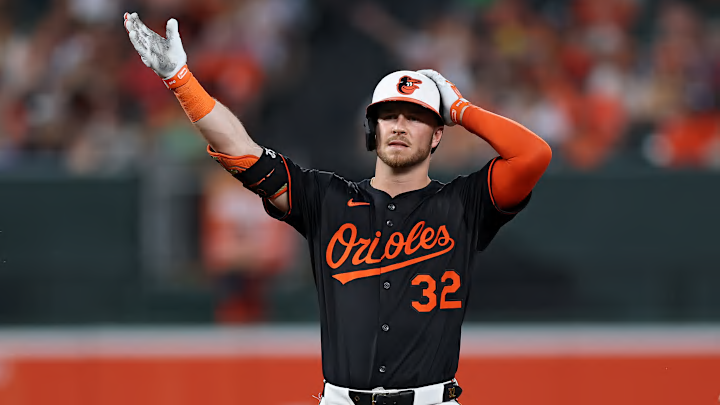In recent years, Mike Elias's trade deadline performances have left Baltimore Orioles fans wanting more. Now, as the club is preparing its offseason plan of attack, it can only look back at one trade made back in July and wish for a do-over.
The Orioles plan to be contenders next season, but the way they handled their two best trade chips at the 2025 deadline did nothing to help further that goal.
Ryan O'Hearn and Ramon Laureano were two of the most sought-after bats on the market. Elias chose to package them together in a deal with the San Diego Padres, which brought six prospects back Baltimore's way.
Ryan O'Hearn-Ramon Laureano trade brought back nothing that will help Orioles in 2026
The club moved on from more than just O'Hearn and Laureano at the deadline, but by virtue of being a reliever, Gregory Soto didn't have as much value, and with a subpar performance, Cedric Mullins wasn't going to fetch much either. Ditto for Charlie Morton and Ramon Urias. O'Hearn and Laureano were the gems, yet Elias opted for a quantity over quality approach for his two best chips.
While six prospects came back, and four of those six ranked among San Diego's top-30 prospects, the strength of the Padres' farm system undermines the weight those rankings hold. Coming into the season, the Padres' system ranked 25th and fell to last in the league following their big deadline splurges. Simply put, most of those youngsters wouldn't have been nearly as highly regarded in anyone else's system.
There's a bigger issue, though. Of the six, all were in the lower minors, meaning they won't play roles in 2026, and likely not in 2027, either. With such an impressive collection of young bats, what Baltimore desperately needed was to get some equally young arms to grow along side of them. They failed in that regard.
That's going to put even more pressure on Elias to come through this offseason with Baltimore needing a true ace, as well as another couple of arms who can slot in the middle and back of the rotation.
While he's stated that the Orioles will consider all options to acquire a top-of-the-rotation pitcher, given his track record, he can't be trusted, especially with the other holes in the rotation. Acquiring a young, major-league-ready arm wouldn't have solved the ace problem, but it would have lessened the needs throughout, improving the likelihood that Baltimore can piece together a competent rotation in 2026.
Bottom line, coming away with zero assets who can help in 2026 for your best two trade chips in a lost season is a huge miss, and it will make the offseason work to return to relevance in 2026 that much harder.
